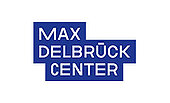Novel Self-Organizing 3D Human Neuromuscular Organoids
Keywords
organoid, neuromuscular, neuromuscular junction, SMA, ALS, myasthenia gravis, spinal muscular atrophy, muscular dystrophy, amyotrophic lateral sclerosis
Invention Novelty
Novel human neuromuscular organoids (NMOs) are provided that can be maintained in 3D culture for several months. HPSC-derived neuromesodermal progenitors (NMP) simultaneously generate spinal cord neurons and skeletal muscle cells that self-organize and generate NMO with functional neuromuscular junctions (NMJ).
Value Proposition
The capacity of organoids to generate complex three-dimensional (3D) structures resembling specific organs is transforming the field of biomedicine. While techniques for developing organoids for different single tissues, including the brain, retina, liver, and gut, have advanced in the past decade, it has remained a significant challenge to simultaneously grow two different tissues in a single functional organoid. Such complex organoids are needed to model diseases where more than one tissue is affected, such as neuromuscular diseases. These diseases are caused by functional defects of the nervous system, skeletal muscle, or arise by defects of the NMJ which is a highly organized chemical synapse formed between motor neurons and skeletal muscles. The NMOs presented here generate all components of the NMJ simultaneously which has been a major challenge so far.
Technology Description
The NMOs contain functional NMJ supported by terminal Schwann cells. They contract and develop central pattern generator-like neuronal circuits important for locomotion. As a proof of principle such NMOs have been used to model key aspects of myasthenia gravis pathology, thus highlighting the significant potential of NMOs for modeling neuromuscular diseases in the future.
Commercial Opportunity
The model is available for collaboration in drug discovery or general studies of neuromuscular diseases.
Development Status
In vitro
Patent Situation
US patent application US 63/050,736 with priority of 10.7.2020
Further Reading
Self-Organizing 3D Human Trunk Neuromuscular Organoids. Cell Stem Cell (2020), 26, 172-186.





